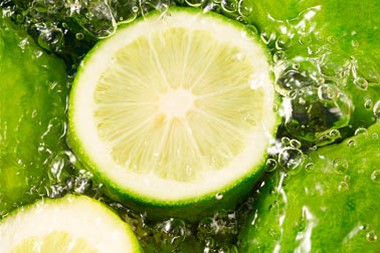The Marvelous Skin Benefits of Tamarind Seed Extract
Introduction
Tamarind, scientifically known as Tamarindus indica, is a tropical fruit widely acclaimed for its culinary and medicinal properties. Beyond its exquisite taste and various applications in the culinary world, it has garnered significant attention for its remarkable benefits for the skin. Rich in antioxidants, vitamins, and minerals, this natural extract has become a popular ingredient in the skincare industry. In this article, we will explore the numerous benefits of it for the skin, its applications, and why it has gained popularity among skincare enthusiasts worldwide.
1. Hydration and Moisturization
One of the key advantages of it for the skin lies in its potent moisturizing properties. The extract contains natural polysaccharides that possess exceptional water-absorbing capabilities. When applied topically, it forms a thin, protective film on the skin's surface, preventing moisture loss and enhancing hydration. This effect aids in keeping the skin soft, supple, and moisturized, making it particularly beneficial for individuals with dry or dehydrated skin.
2. Anti-aging Properties
The battle against premature aging is a concern for many individuals seeking youthful and radiant skin. it comes to the rescue with its impressive anti-aging properties. Loaded with antioxidants like vitamin C, vitamin E, and beta-carotene, the extract combats free radicals that contribute to skin aging. By neutralizing these harmful molecules, it helps reduce the appearance of fine lines, wrinkles, and age spots, promoting a more youthful complexion.
3. Skin Brightening and Even Tone
it contains alpha-hydroxy acids (AHAs), such as tartaric acid and malic acid, which gently exfoliate the skin's outer layer. This mild exfoliation helps remove dead skin cells, impurities, and excess sebum, resulting in a brighter and more even skin tone. Regular use of it can help fade dark spots, hyperpigmentation, and post-inflammatory marks, leading to a smoother and more radiant complexion.
4. Anti-inflammatory and Soothing Effects
For those with sensitive or inflamed skin, it offers a soothing remedy. The extract contains compounds like flavonoids and polyphenols, which possess anti-inflammatory properties. When applied to irritated skin, it helps reduce redness, swelling, and itching, providing relief from various skin conditions like eczema and dermatitis.
5. Collagen Production and Skin Elasticity
Collagen, a crucial protein responsible for skin's elasticity and firmness, tends to decrease with age. A it has been found to stimulate collagen production in the skin. The extract's rich nutrient profile supports the synthesis of collagen fibers, promoting skin elasticity and firmness, thus minimizing the appearance of sagging skin and promoting a more youthful appearance.
6. Antimicrobial and Acne-Fighting Properties
it's antimicrobial properties make it effective in combating acne-causing bacteria. By keeping bacteria at bay, the extract helps prevent acne breakouts and supports the healing process of existing blemishes. Additionally, its gentle exfoliating action unclogs pores, reducing the formation of blackheads and whiteheads.
7. UV Protection
While it is not a replacement for sunscreen, it has been shown to provide some degree of protection against harmful ultraviolet (UV) rays. The extract contains antioxidants that can neutralize free radicals induced by UV exposure, helping to mitigate sun-induced skin damage.
8. Anti-allergenic Properties
Individuals prone to skin allergies and irritation can benefit from it's anti-allergenic properties. It aids in calming skin sensitivity and reducing allergic reactions, making it suitable for those with sensitive skin types.
Applications in Skincare Products
The versatility of it allows it to be incorporated into various skincare products, including
1. Moisturizers and Lotions it is commonly found in hydrating creams and lotions due to its moisturizing properties.
2. Serums Anti-aging serums often include it to promote collagen synthesis and reduce fine lines.
3. Exfoliants it's mild exfoliating action makes it a valuable ingredient in facial scrubs and exfoliating masks.
4. Soothing Gels Its anti-inflammatory effects make it a suitable ingredient for calming and soothing gels, especially for sensitive skin.
Conclusion
it's remarkable benefits for the skin have positioned it as a prized ingredient in the skincare industry. From its exceptional moisturizing properties to its anti-aging, brightening, and anti-inflammatory effects, this natural extract offers a comprehensive range of benefits. With the rising demand for natural and effective skincare solutions, it is likely to continue gaining popularity among skincare enthusiasts worldwide. As with any skincare ingredient, patch testing and consultation with a dermatologist are essential to ensure individual suitability and maximize the benefits of this marvelous extract for the skin.
Harnessing the Power of Tamarind Seeds for Skincare
Introduction
Tamarind, scientifically known as Tamarindus indica, is a tropical fruit tree native to Africa but widely cultivated in various regions across the world. While tamarind pulp and leaves have been used for culinary and medicinal purposes for centuries, the seeds, often overlooked, contain valuable properties that can be harnessed for skin care. In this article, we will explore the various ways tamarind seeds can be utilized to enhance skin health and appearance.
1. Tamarind Seed Oil
One of the most popular applications of tamarind seeds in the skincare industry is the extraction of tamarind seed oil. The oil is rich in essential fatty acids, such as linoleic acid, oleic acid, and palmitic acid, which are beneficial for skin nourishment and hydration. Tamarind seed oil also contains antioxidants, like vitamin E, that help protect the skin from environmental damage and premature aging.
To produce tamarind seed oil, the seeds are first roasted, and then the oil is extracted through a cold-pressing process. This pure and natural oil can be used as a facial moisturizer, body oil, or as an ingredient in various skincare formulations, such as serums and creams.
2. it
The it is another valuable derivative that finds its way into skincare products. The extract is obtained by grinding the seeds into a fine powder and then mixing it with a suitable solvent to create a concentrated solution. The it is known for its film-forming properties, which can create a protective layer on the skin, helping to improve its texture and moisture retention.
Incorporating it into facial masks, moisturizers, and serums can provide the skin with a smoother and more youthful appearance, as well as enhance its elasticity.
3. Anti-aging Benefits
Tamarind seeds are a natural source of hyaluronic acid, a substance renowned for its anti-aging properties. Hyaluronic acid helps the skin retain moisture, resulting in a plumper and firmer complexion. Regular use of tamarind seed-based products can reduce the appearance of fine lines and wrinkles, giving the skin a more youthful look.
Furthermore, the antioxidants present in tamarind seeds combat free radicals that contribute to skin aging, making it an effective natural solution for maintaining healthy and vibrant skin.
4. Skin Brightening
its have shown promise in improving skin tone and reducing dark spots and hyperpigmentation. The presence of alpha-hydroxy acids (AHAs) in tamarind seeds contributes to mild exfoliation, which helps remove dead skin cells, revealing a brighter and more even complexion.
Formulations containing it can be used as a natural alternative to chemical exfoliants, promoting skin renewal without harsh side effects.
5. Sun Damage Repair
Prolonged exposure to the sun's harmful UV rays can cause damage to the skin, leading to sunspots and an uneven skin tone. Tamarind seeds' natural compounds, like polyphenols and flavonoids, possess skin-soothing properties that can aid in repairing sun-damaged skin.
By using tamarind seed-based skincare products, individuals can minimize the effects of sun damage, supporting the skin's healing process and promoting a healthier complexion.
6. Acne and Blemish Control
Tamarind seeds have antimicrobial properties that make them effective in controlling acne-causing bacteria. Incorporating it into skin care products can help reduce acne breakouts and minimize the occurrence of blemishes.
Additionally, it's anti-inflammatory qualities can assist in soothing irritated skin, making it beneficial for those with sensitive or acne-prone skin.
Conclusion
Tamarind seeds are a hidden gem in the skincare industry, offering numerous benefits for skin health and appearance. From the extraction of tamarind seed oil to the utilization of it, these natural derivatives have shown their potential in providing nourishment, hydration, and anti-aging effects for the skin. Whether it's for brightening, repairing sun damage, or controlling acne, incorporating tamarind seed-based products into skincare routines can unlock the secrets of this versatile tropical ingredient, helping individuals achieve healthier and more radiant skin.
Can I Apply Tamarind on My Face? Unlocking the Benefits of Tamarind in Skincare
Introduction
In recent years, natural remedies and ingredients have gained popularity in the skincare industry, as people seek gentler alternatives to conventional products. One such natural ingredient that has captured attention is tamarind. Widely used in culinary applications for its tangy flavor, tamarind also holds promising potential for skin care. This article explores the benefits, risks, and applications of tamarind in skincare routines, answering the question Can I apply tamarind on my face?
Section 1 Understanding Tamarind
Tamarind, scientifically known as Tamarindus indica, is a tropical fruit native to Africa but is now widely cultivated in various parts of the world. The fruit is characterized by its brown, pod-like appearance, containing pulp and seeds within. Its unique taste, a blend of sweet and sour, has made it a popular ingredient in cooking. However, it is the compounds found in tamarind that have sparked interest in its potential for skin care.
Section 2 The Nutritional Profile of Tamarind
Tamarind is rich in essential vitamins, minerals, and antioxidants that contribute to its potential benefits in skincare. These include
1. Vitamin C An antioxidant that helps combat free radicals, promoting a more youthful appearance.
2. Vitamin A Known for its role in promoting skin cell regeneration and a healthy complexion.
3. Alpha hydroxy acids (AHAs) AHAs are natural exfoliants that can help remove dead skin cells, promoting a smoother and brighter complexion.
4. Antioxidants Tamarind contains various antioxidants that protect the skin from oxidative damage, which can contribute to premature aging.
Section 3 Potential Benefits of Tamarind in Skincare
1. Natural Exfoliation Tamarind's AHAs gently remove dead skin cells, promoting a smoother texture and reducing the appearance of fine lines and wrinkles.
2. Brightening Properties Vitamin C and other antioxidants in tamarind can help fade dark spots and even out the skin tone, giving the skin a brighter and more radiant look.
3. Hydration Tamarind contains natural sugars and moisturizing properties that can help retain moisture in the skin, promoting hydration and preventing dryness.
4. Anti-inflammatory Effects Certain compounds in tamarind possess anti-inflammatory properties, which may help soothe irritated or sensitive skin.
Section 4 How to Use Tamarind in Skincare
While tamarind shows promise in skincare, it is essential to use it safely and effectively. Here are some common ways to incorporate tamarind into your skincare routine
1. Tamarind Face Mask Create a natural face mask by mixing tamarind pulp with yogurt or honey. Apply the mixture to your face, leave it on for about 15 minutes, and then rinse thoroughly.
2. Tamarind Scrub Make a gentle exfoliating scrub by combining tamarind pulp with fine sugar or oatmeal. Gently massage the scrub onto damp skin in circular motions, then rinse off.
3. Tamarind Toner Prepare a tamarind-infused toner by steeping tamarind in hot water and allowing it to cool. Transfer the liquid to a spray bottle and spritz it on your face after cleansing.
4. Tamarind Serum Mix tamarind extract with a carrier oil like jojoba or almond oil to create a hydrating and antioxidant-rich serum.
Section 5 Precautions and Potential Risks
Although tamarind has many potential benefits, it may not be suitable for everyone. Some individuals may be allergic to tamarind or experience skin irritation upon its application. It is crucial to conduct a patch test before using tamarind on your face and discontinue use if any adverse reactions occur.
Additionally, individuals with sensitive skin or certain skin conditions should consult a dermatologist before incorporating tamarind into their skincare routine. A professional can provide personalized advice and ensure the ingredient is safe for their specific skin needs.
Conclusion
Tamarind Seed Extract offers a range of potential benefits for skin care, including natural exfoliation, brightening properties, hydration, and anti-inflammatory effects. When used safely and appropriately, tamarind can be a valuable addition to a natural skincare routine. As with any new skincare ingredient, it is essential to exercise caution, conduct patch tests, and seek professional advice if necessary. So, the next time you wonder, "Can I apply tamarind on my face?" - remember that with the right approach, tamarind could become a delightful and effective component of your skincare journey.
Contact us selina@ciybio.com.cn




